Last updated: August 5, 2025
Article
Mysterious Marsh: Mysteries from the Remnants of the First Namesake
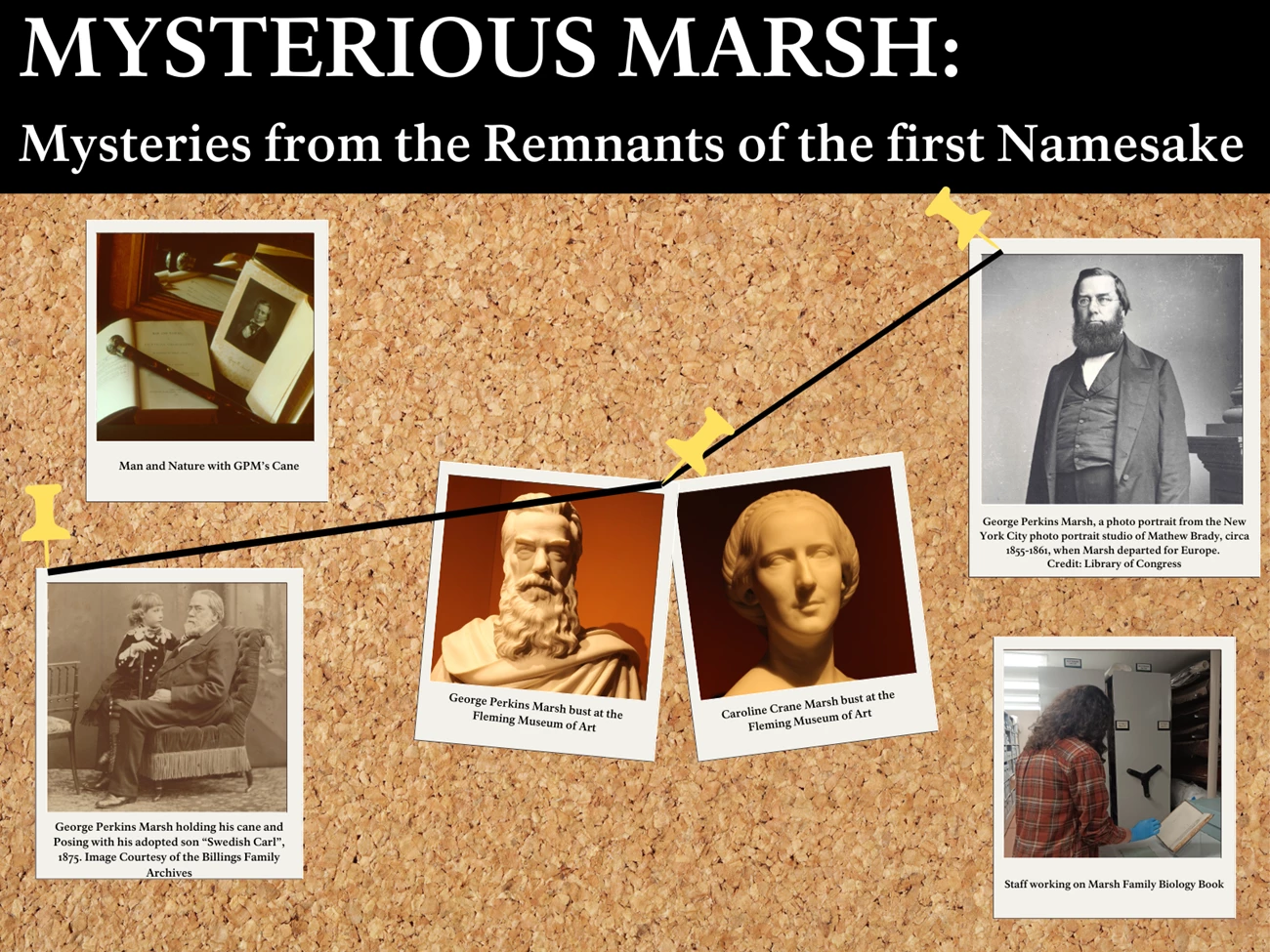
NPS Photo
When it is Remembered that Mr. Marsh was a son of Vermont, and her most renowned scholar, that from early manhood until he went abroad in diplomatic life.
Often at the park, we focus on George Perkins Marsh as a nationally significant conservationist writing Man and Nature, but there is so much more to him. Through the artifacts in this exhibit, one can see Marsh’s diverse background such as: helping found the Smithsonian Institute, mastering 20 languages, and travelling the world to name a few. Although George Perkins Marsh is honored first in the parks’ name and was the inspiration for the historical park, there are few objects related to Marsh in the park's museum collection. When his family sold his boyhood home in 1869, they left nothing behind. The artifacts in this exhibit exist because people wanted to preserve his memory but leave behind curatorial mysteries today. Why did these figures donate these specific artifacts? What can they tell us about the donor and the Marsh family? (Frederick Billings to Caroline Crane Marsh November 8, 1882)
I had indulged the hope that sometime I should see M(r.) Marsh and yourself here in the old homestead which he loved so much, and which goes by the name of the Marsh Place. Of course it is very much changed, but we have had a delightful home here for a good many years. Your husband was always kind to me when I was a young man. My heart was full of love for him, and it was a great grief to me to hear of his death, and to feel that I should never see him here.
Memories of Marsh in the Mansion
Although the Marsh family left nothing behind when they sold the estate to the Billings family, this biology book and meat fork get donated to the park later and leave behind mysteries today. Who is the mysterious Elvira who signs this Marsh family heirloom? Why does the Marsh family keep this meat fork of all items between the generations?
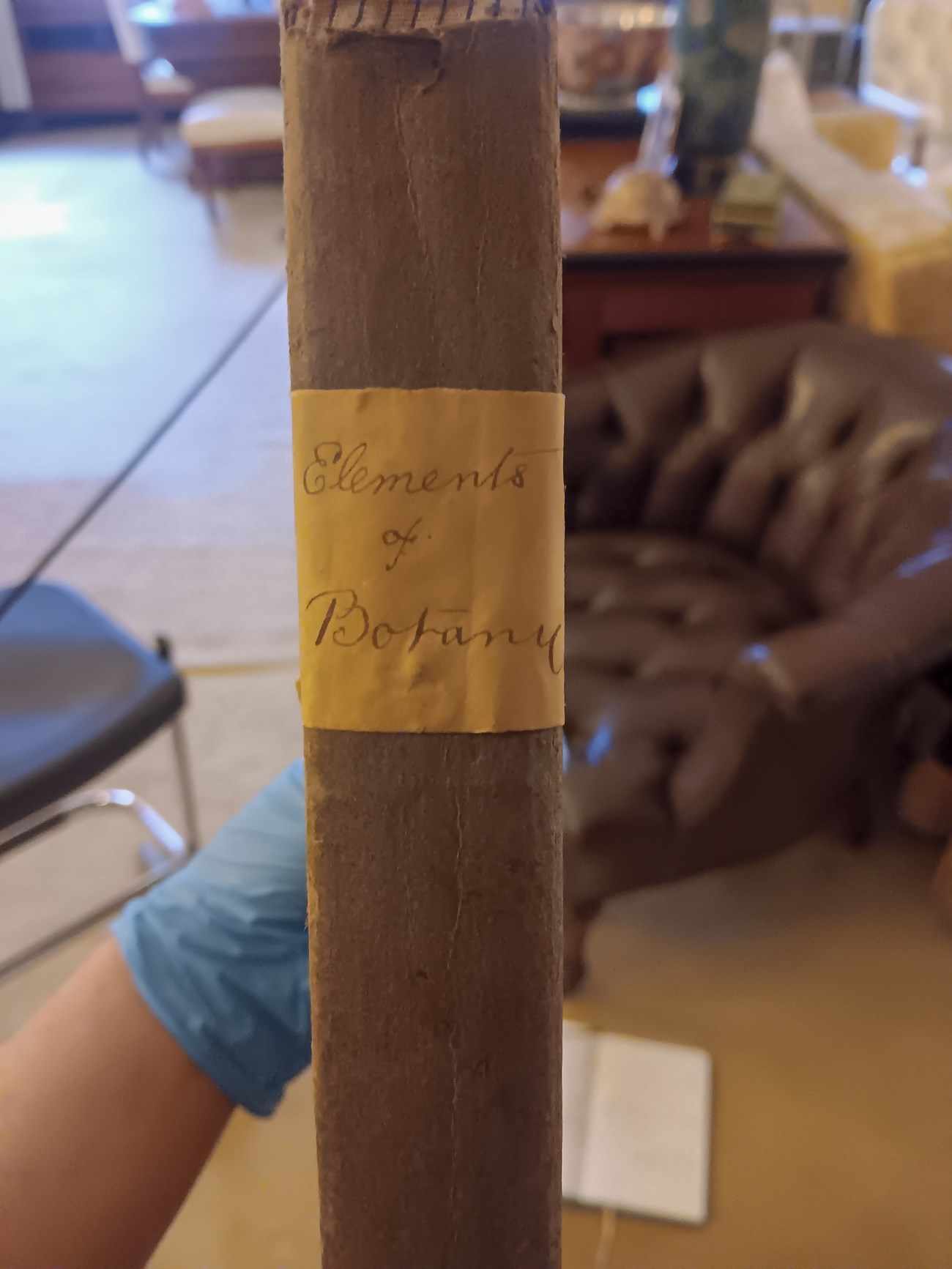
NPS Photo
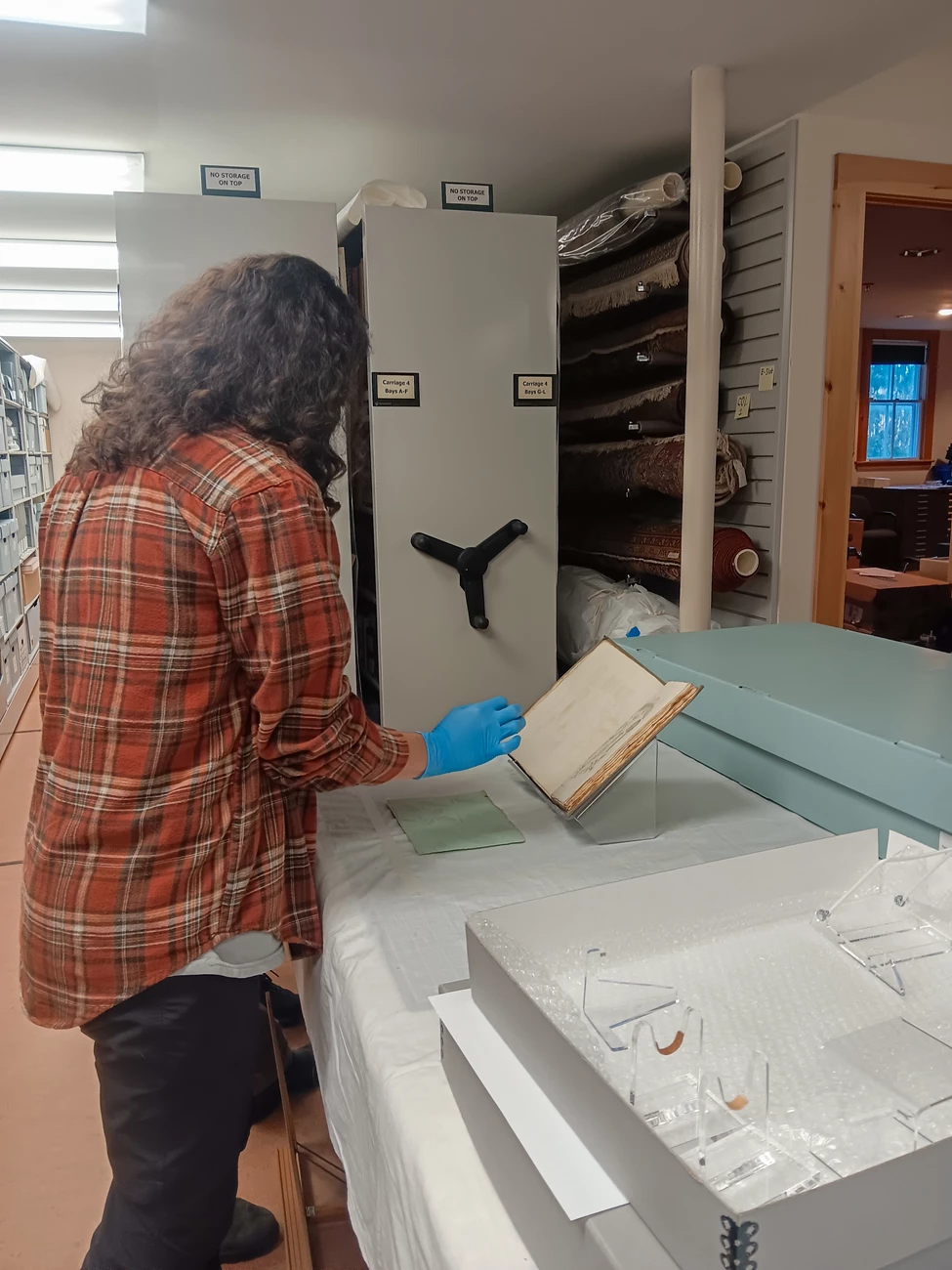
NPS Photo
Carved with George Perkins Marsh’s initials, this meat fork was donated by David Lowenthall, an early friend of the park who wrote multiple books on George Marsh. Lowenthall acquired it from Caroline Marsh’s estate in New York. But why might one keep this very oddly specific item? Compare this meat fork to a similar style macaroni server from the Billings family silver collection. As opposed to the large collection of silver utensils left by the Billings, French, and Rockefeller families we only have this one fork left by the Marsh's. Silver was quite expensive during the eras the Marsh and Billings families resided in the house, so much so that the Billings family installed a hidden safe in their dining room to store silverware when they were not in the Mansion. The later generations that inhabited the Mansion were able to afford silver sets from famous makers like Tiffany and Co., but George Marsh was of a lower status. Seeing the two utensils together one can get a sense of the disparity of wealth between the two families.
Behind the Scenes: Collaboration with Natural Resources Team
Natural resources and education interns worked with the curatorial team to analyze the Marsh Family Biology Book and create a unique experience. Due to light levels in the gallery space it is best practice to flip a books page as often as possible in order to lessen the effects of light damage on the page displayed. All of the pages displayed in the exhibit are plants that can be easily found on the park’s property. Can you find the plants on these pages of the book?
As a special interactive element, we also wanted to pay homage to early botanical collections. Found within the book were charcoal impressions of plants that seem to all be from around the park’s area in Elvira’s handwriting. Charcoal impressions of plants was an early method of recording botanical data. Although the herbarium became much more popular as time went on, this paper may have inspired Elizabeth Billings to create her monumental herbarium. Certainly, the artifact speaks to the history of women in science. Displaying this singular piece of paper would cause irreversible damage, even though it speaks to the history of early conservation science in the park. Instead, we choose to create a stamp out of one of the impressions. The National Park Service is known for passport stamps to collect at each park, so having an extra stamp related to an exhibit seems like a perfect fit. Yarrow was specifically chosen because we recently planted a pollinator garden outside the Forest Center including yarrow. Besides being excellent for pollinators, yarrow can be used medicinally, grows in multiple places across the park, is recorded in the Billings-Kittredge Herbaria, and has many benefits for other species. This stamp will live on past the exhibit at the various children's programs and events at the Forest Center, to showcase historical and current conservation methods.
Cane Connections
This cane was given to Frederick Billings by the Marsh family. How have the other generations that lived on the property been inspired by the cane?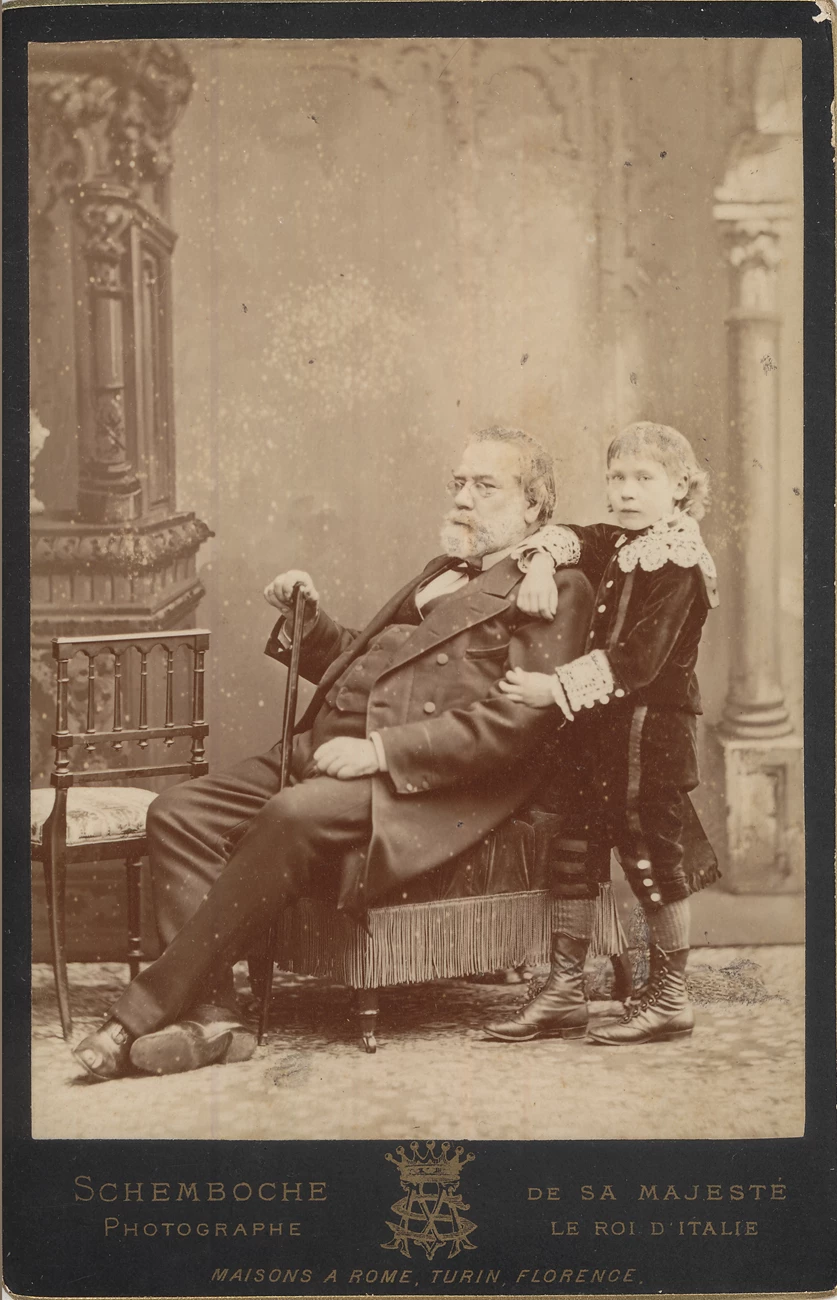
Image courtesy of the Billings Family Archives, The Woodstock Foundation, Inc.
Seeing the cane in the picture and wishing some souvenir of Mr. Marsh for myself I have thought, perhaps, you would let me have it--or an inkstand which he used--or the chair in which he sat in his library - Am I too bold?
This cane was given to Frederick Billings by the Marsh family. How have the other generations that lived on the property been inspired by the cane?
Upon seeing the photograph of George Marsh in his library with the cane, Frederick Billings asked for this as a memento from Caroline. It is implied in a letter that Frederick was given multiple options to choose from by Caroline but ultimately decided upon the cane. Why a cane? Perhaps, because George Marsh would use a cane while exploring this property due to his poor eyesight. Marsh points to this time exploring the woods of Vermont as what inspired him to write Man and Nature.
After the initial exchange Caroline and Julia correspond after to drop off the cane before Christmas and later make multiple plans to visit each other. The Billings and later the Rockefellers kept their own canes and walking sticks right next to the front door in the Mansion. The Marsh cane has been stored in multiple places over the years, but it is nice to think it may have been displayed right amongst the Billing’s canes by the front door. Perhaps even used to appreciate the landscape they all worked so hard to preserve.
Below George Marsh’s cane are two walking sticks used by the Billings Family. One is a very ornate gift; the other is made of a branch of Ash probably from the park and used by the generation of conservationists that blossomed out of the friendship between George Marsh and Frederick Billings. The Rockefellers even leave a walking stick by the door of each room at their RockResorts, The Woodstock Inn, so visitors are encouraged to explore nature and honor George Marsh’s legacy. How does George Perkins Marshes cane compare to these owned by the Billings Family? Why might they be similar or different?
I leave this morning at your residence a very simple cane, the associations connected with which, will, I hope, make it acceptable to Mr. Billings.
Behind the Scenes: Man and Na-Tree
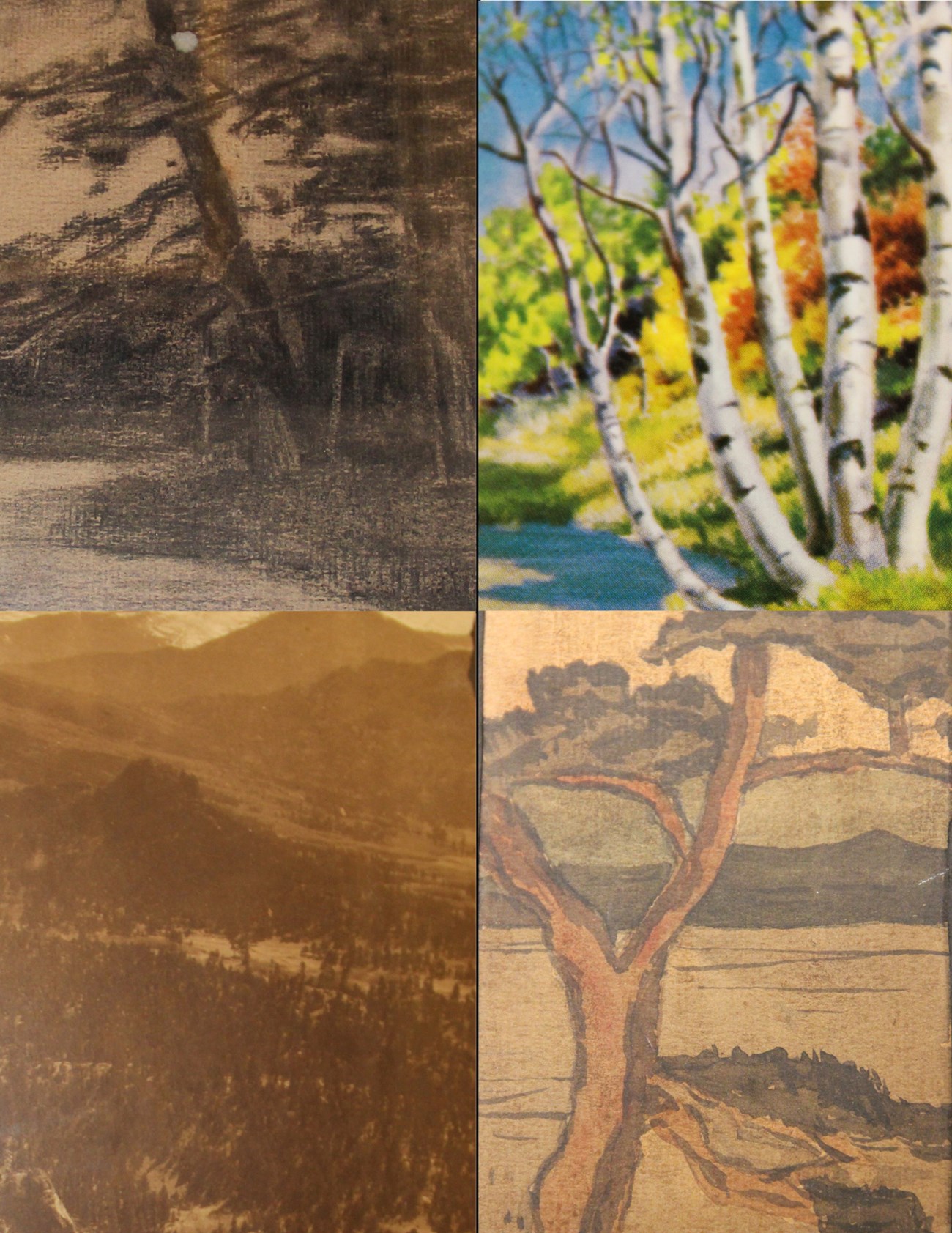
NPS Photo
Throughout this exhibit I purposefully tried to focus on every aspect of George Perkins Marsh, besides his book Man and Nature because it is often the only aspect of Marsh that is highlighted at our Park and is thoroughly explored in the Visitor Center exhibit next to this exhibit. In order to still acknowledge Man and Nature, I created a tree identification game with help from the Natural Resources and Education departments. I wanted to show how these trees originally detailed in Man and Nature are appreciated and conserved throughout the generations and today in modern forestry practices. Connecting these trees to the canes and even the table the game is on made of the same wood shows how inspirational this text is for everyone at the park.
Love through Language
George and Caroline Marsh were both accomplished linguists and published multiple books throughout their lifetime. How was George inspired by his wife Caroline’s work?
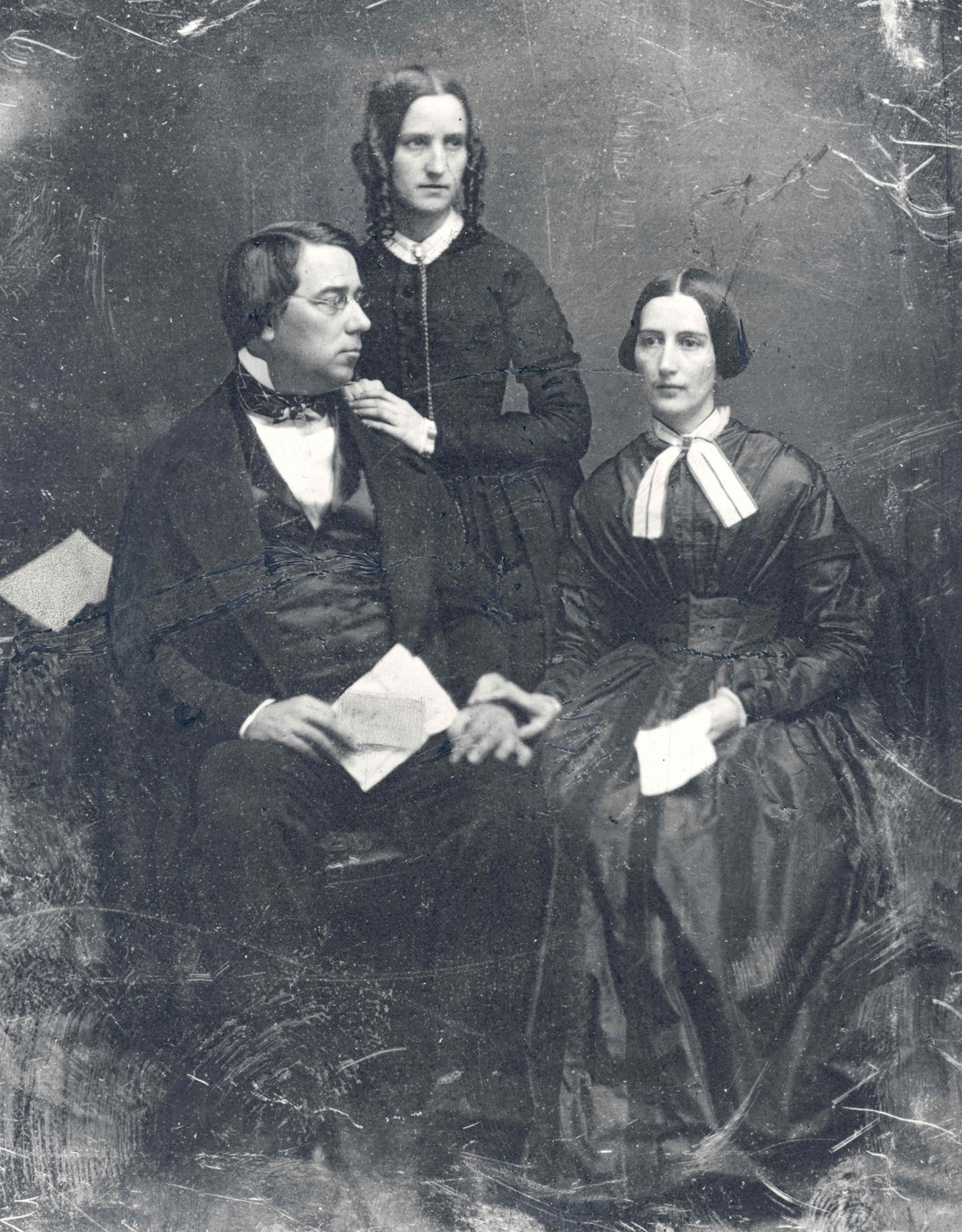
Library of Congress
George Perkins Marsh was fluent in 20 languages including: Greek, Latin, Spanish, Portuguese, French, Italian, Icelandic, German, Danish, Swedish, Old Norse, Turkish, and the others non-specifically noted as Scandinavian languagesiii. His first job out of college was as a Latin Professor, later becoming an accomplished linguist in his role, teaching English language and literature at Columbia University. Mostly self taught, this command of languages aided his success as an ambassador in the Near East and Italy in his later years. In the museum collection today, we have a variety of his speeches on language.
Caroline Crane Marsh, George’s second wife, writes Wolfe of the Knoll and Other Poems and includes translations from other Swedish and German poets. The poems reflect upon natural settings and man observing them, perhaps serving later as inspiration for Man and Nature. Caroline and George Marsh were both accomplished translators, in fact the same year Wolfe of the Knoll and Other Poems was published George published Lectures on the English Language. These texts were reviewed together, “The appearance of two works resembling one another in scarcely anything in their degree of excellence, by husband and wife, reminds us of those medals or coins which represent the parallel profiles of husband and wife in precise and beautiful workmanship” (The Home Journal). Although Caroline suffered from illness throughout her life, she mastered French, Italian, Swedish, and German and also published the first translation of The Hallig or, The Sheepfold in the Waters: A Tale of Humble Life on the Coast of Schleswig by Johann Christoph Biernatzki. George and Caroline bonded over their shared love of languages.
Behind the Scenes: Digitization and Further Reading
In order to preserve our original copy of Wolfe and the Knoll we decided not to open any of the pages and instead encourage visitors to read the whole digitized text online and perhaps her translation of The Hallig: or, The sheepfold in the waters. While reading Caroline’s poetry, one can start to see a comparison between George Marsh’s Man and Nature, through the specific historical references. In the exhibit, there is a small “detective desk” set up with modern copies of these books. On the desk there is also an “evidence binder” where many of our paper-based records like George Marsh’s speeches on language are located, but all are also digitized.
Art Connecting the Generations
The Greek Slave sculpture is rumored to be placed to start conversations about George Perkins Marsh, but none of those conversations were recorded. What aspect of the sculpture, artist, or the relationship of the artist with the Marsh's were the Rockefellers talking about?
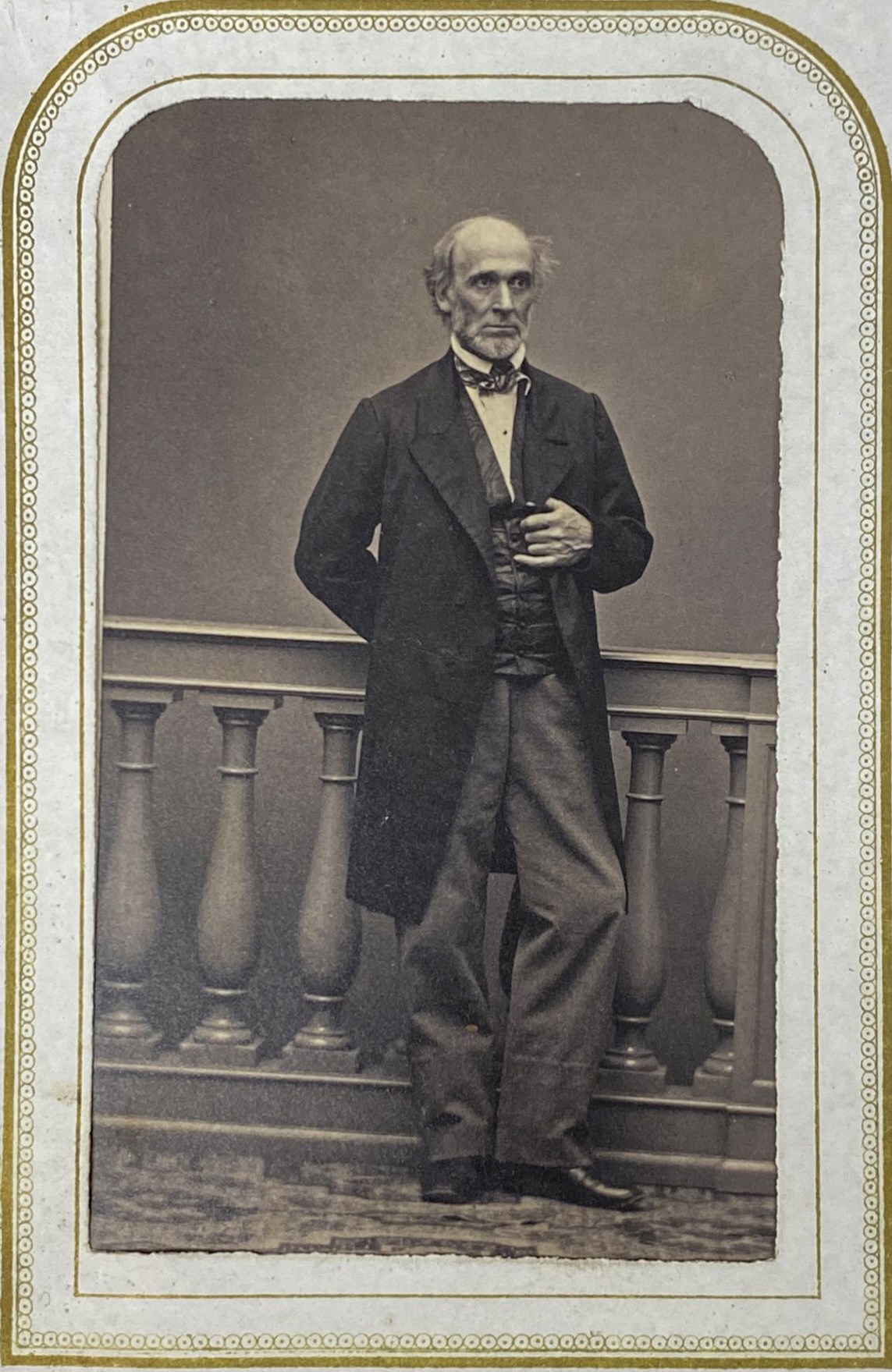
Image courtesy of the Billings Family Archives, The Woodstock Foundation, Inc.
“Fancy lends me wings at night and I seem to fly along the banks of the Quechee over the dear village and the meadow around.”
The Greek Slave by Hiram Powers is one of the centerpieces of the Mansion’s Library. It was purchased in the 1979 by Laurance Rockefeller to pay homage to George Perkins Marsh, but all of the major figures in the park have a distinctive interaction with the sculpture that gives a lens into how they passed down the stories of Marshvi. See the Marsh, Billings, and Rockefeller’s relation to the piece below.
The bust on exhibit is a partial replica of the larger nude figure, which was divisive during its time because of the artist’s depiction of a nude female. During the 1840-50s, when viewing the sculpture on exhibit visitors were separated by gendervii. The sculpture is intended to show the defeat of Greek democracy, with a Christian woman in chains at a Turkish slave market. Powers was interested in Spiritualism and points to these beliefs in the creation The Greek Slave, due to his oracular recurring dream of a naked female figure on a pillar near a river in Woodstock, Vermont. Powers’ work is rather political, sculpting major political figures like Daniel Webster and advocating for the abolitionist movement.
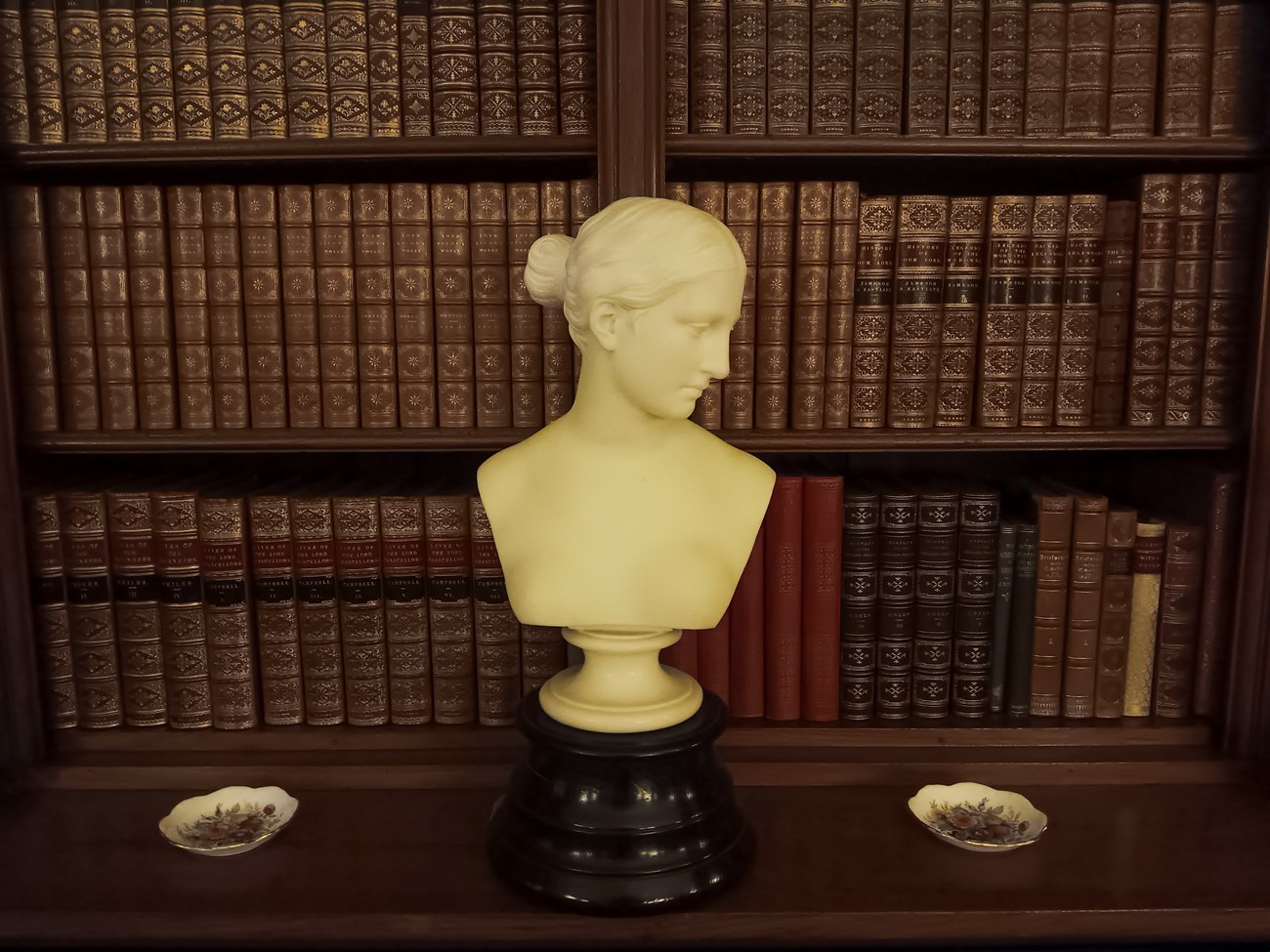
NPS Photo
Marsh grew up attending school with Powers in Woodstock and according to letters enjoyed listening to Powers’ imaginary stories during recess at schoolviii. Although Powers left Woodstock at 12 years old, Marsh would rekindle their friendship while living in Tuscany later in life They exchanged more than 80 letters most of which ending with a declaration of friendship such as “I am ever most sincerely your friend” (Hiram Powers August 17, 1851).
Powers even sculpted a bust of Geroge’s wife, Caroline Crane Marsh, and while modeling they would talk about the spiritualist movement (Caroline Marsh’s Diary July 17 1862). Perhaps if Marsh was able to decorate the Mansion’s Library himself, he would install Powers’ bust of Caroline, which was the centerpiece of his own library in Italy. When it came time for Marsh to have a bust made of himself, he interestingly commissioned another artist insisting it belonged with his library upon his death. Much like this sculpture, Marsh and Powers’ political opinions caused a stir advocating for change in the United States even while living abroad, often exchanging thoughts and opinions on the Civil War or their mutual interest in Ancient Roman and Greek culture.
Frederick Billings, as the secretary of Vermont, appointed George Marsh to correspond and mediate terms with Hiram Powers for two sculptures for the Vermont capital building (Letter 1846 and Marsh’s Response). This is one of the only letters that survives between Frederick Billings and George Marsh, even though later Billings chose to preserve Marsh’s library, bust, and pay homage to him at his property in Woodstock, Vermont. Due to this request Marsh and Powers would soon reconnect and Marsh would later pay homage to Powers in his reconstruction of the Vermont State House. Billings seems to have had an interest in Powers because of the previous sculpture he made of Daniel Webster, which he had books detailing (MABI 13059, 13054), and a portrait of Powers in his “Famous Persons” album seen above.
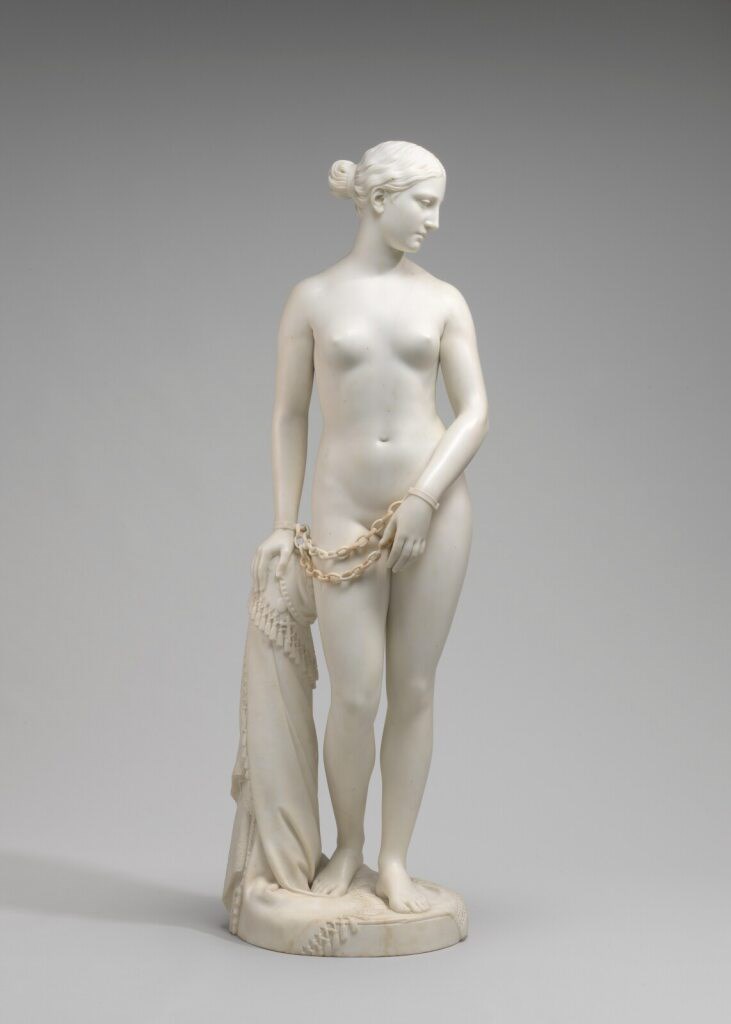
National Gallery of Art
Due to the popularity of The Greek Slave, it would have been difficult for the Billings family to get a copy at that time, but this particular piece much like some of Marsh’s values did not seem to line up with the Billings family values. Similar to the mystical story of the creation of the original sculpture, Powers was interested in Spiritualism which he chatted to the Marsh's extensively about. The Billings were rather devout Christians and although this piece does have imagery related to Christianity this could be a point of friction. The Billings tried to stay neutral on major political movements such as Abolition or Women’s Suffrage, which the statue specifically speaks to as well.
Laurance and Mary Rockefeller acquired a replica of The Greek Slave sculpture on April 20th, 1979, in Italy and purposefully placed it in the Mansion’s Library. During the Rockefeller's residence in the Mansion, the Library was known to be deliberately curated to display artifacts that would lead to meaningful conversations. There are minimal artifacts around the Mansion that relate to Marsh, so much like Frederick Billings acquiring Marsh’s cane in 1883 to have “some souvenir of Mr. Marsh for myself” (Frederick Billings to Caroline Marsh January 1, 1883) it seems the Rockefellers purchased and placed The Greek Slave sculpture as an homage to Marsh while living in Woodstock. The Rockefellers did not often document why they placed artifacts in certain locations, so why did they have this bust here to remember Marsh?
Looking further into the park’s museum collection, it should be noted that Mary Rockefeller collected artwork from Woodstock locals and displayed them in the public facing areas of the Mansion. As an artist herself, Mary created her own sculpted busts of her children, thus The Greek Slave piece seems to fit into her collection for those two reasons. Much like Caroline Marsh preserving her husband’s legacy, Mary comes from a line of women that steward remembrance of the family. Perhaps for her it was a feminist symbol, much like it inspired suffragette Lucy Stone. Laurance’s mother Abby Aldrich Rockefeller wrote to Laurance to advocate for Civil rights, much like Marsh and Powers did, perhaps it is a reminder to speak up. It is odd that this version chosen does not include the full nude figure, being able to admire the sculpture without the more divisive part of it. Laurance was known as the quiet brother, making change from the shadows, perhaps the choice echoes this nature. There is no definitive answer as to why The Greek Slave sculpture was purchased and exhibited in the Mansion, but the connection to all three families does not seem to be a coincidence.
Behind the Scenes: The Spark of the Mystery
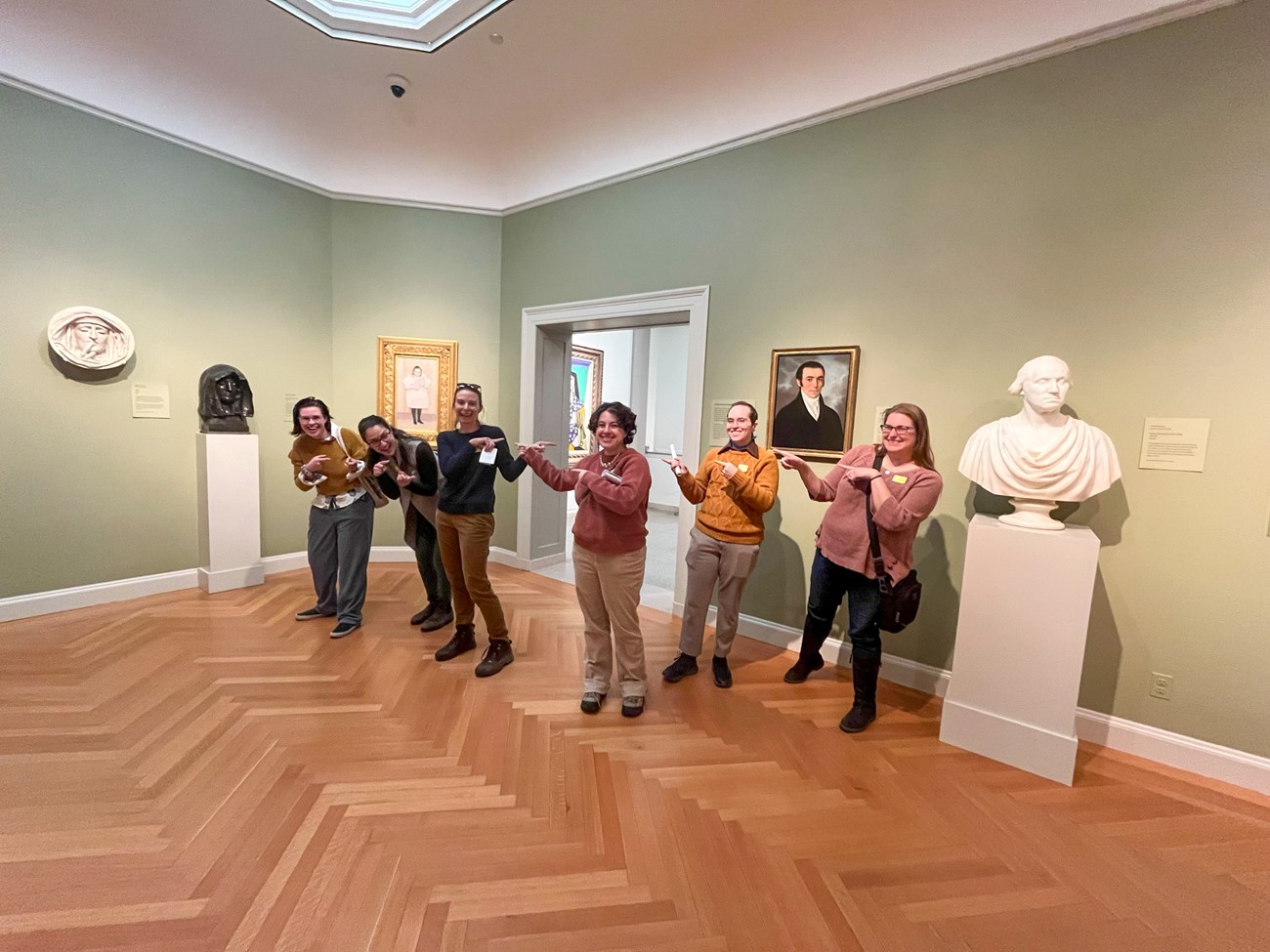
NPS Photo
This mystery of what exactly the Rockefeller’s conversations were about surrounding Marsh, and this artifact in particular was the spark of this entire exhibit. This exhibit purposefully has a fun campy mystery theme to highlight just how many mysteries still exist in museum collections and how we will never know the answers to cold cases like this. Visitors are encouraged to try their best to solve mysteries or contribute to the case with interactive questions. Marsh himself is a really well explored figure, with more than six books published about him, but the artifacts that wind up in our collection all have odd little “cases” to explore. All of the artifacts in the exhibit have text panels next to them that are purposefully look like messy detective case files covered in sticky notes, polaroids, and paperclipped additions. The opening panel is supposed to look like a “murder board” with strings connecting various mysteries throughout the exhibit and looks very similar to my desk full of research at times.
The Smithsonian’s First Art Collector
George Perkins Marsh contributed a large print collection for the foundation of the Smithsonian, which has similarities to the Billings and Rockefeller collections. Did the Billings and Rockefellers families purposefully collect similar prints?
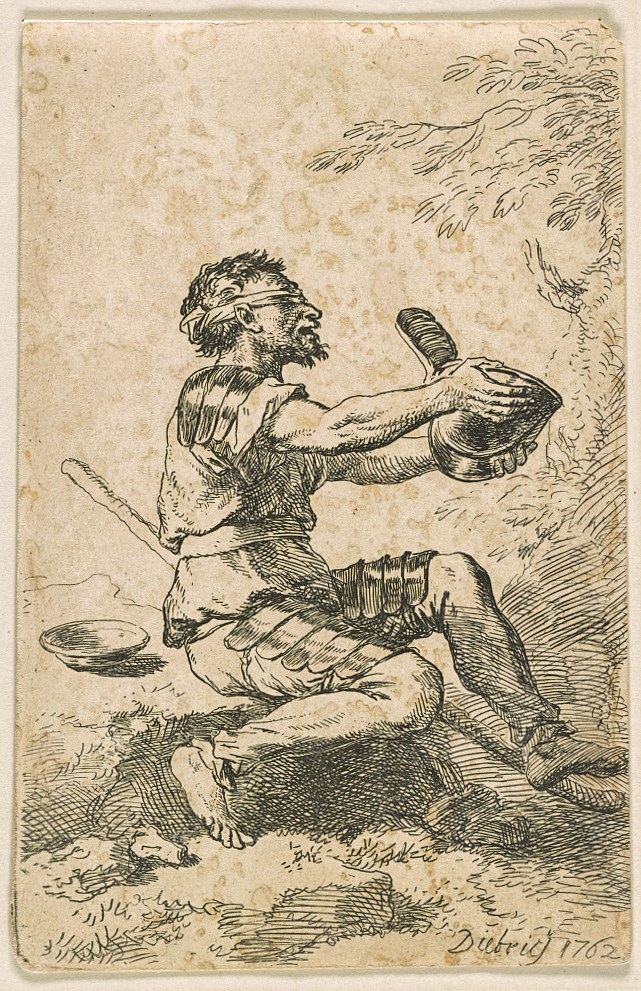
Library of Congress
Etchings in the collection have similar engravers, subjects, and style to the prints collected by Marsh and donated to the Smithsonian in 1850 making it their first art collection. Although we think of Marsh as a conservation pioneer, he advocated for the Smithsonian to include art. We will never know exactly how many prints were donated to the Smithsonian from the Marsh collection due to the devastating 1865 fire, but more than 425 have been catalogued. These prints exhibited were collected by the Billings family later when print and engraving collecting became popular. These simple black ink on paper etchings made seeing European artwork possible in the United States so Marsh could accomplish his goal of “promoting all knowledge for the common benefit of men” (4, April 23 1846).
The Billings and Rockefeller families both amassed a large print and etchings collection. Today the park stewards this collection through conservation. The three etchings here are an example of what happens to artifacts over time: frames chip, paper foxes, and hanging methods get worn down. Recently, the park has been able to begin conservation of the print and engraving collection in the Mansion. Soon these etchings will be conserved as well.
Behind the Scenes: Salon Style
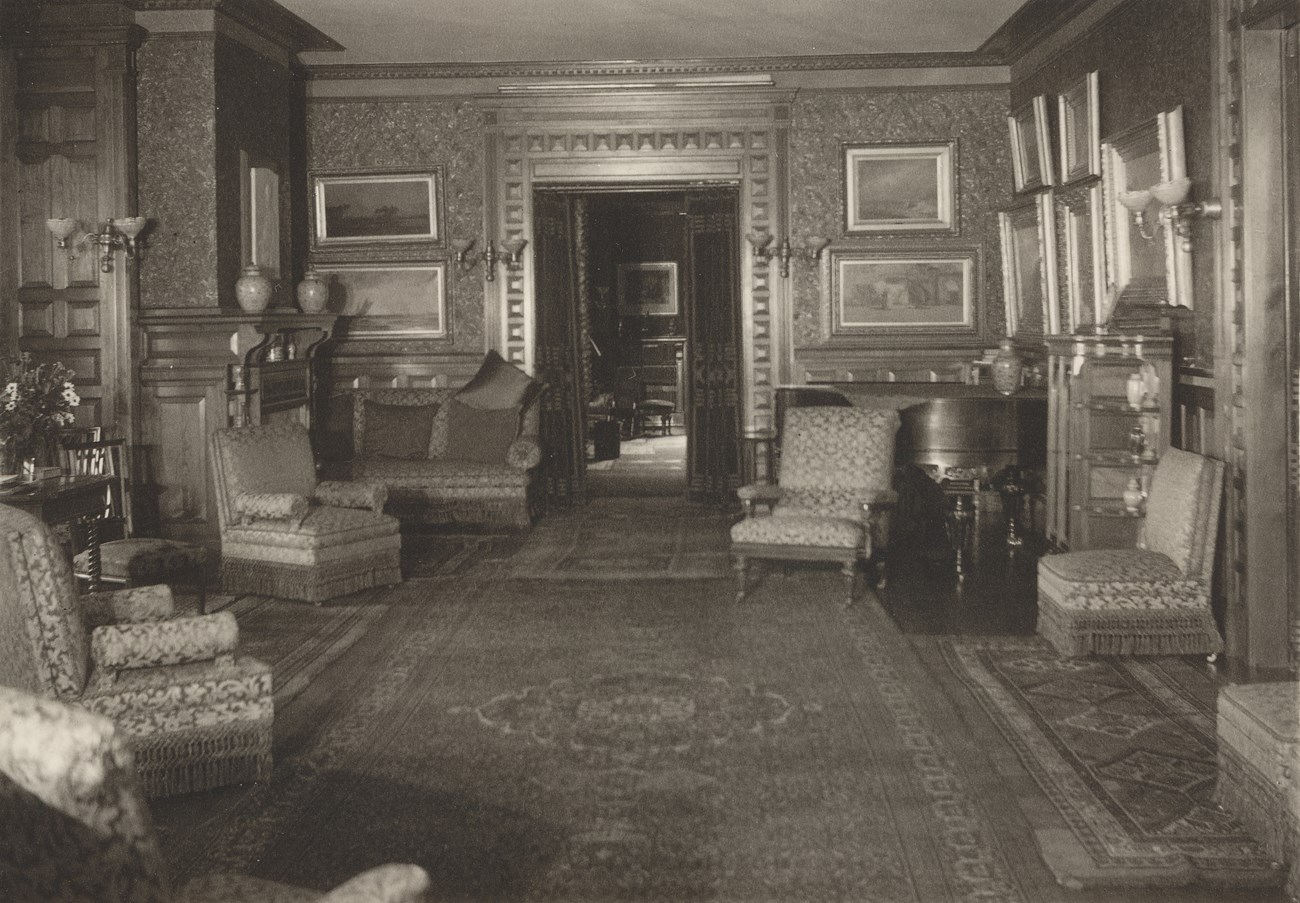
Image courtesy of the Billings Family Archives, The Woodstock Foundation, Inc.
These prints and the other framed collection items exhibited on this wall are purposefully stacked and close together in order to simulate “salon style” art hanging. Salon style was popular when George Perkins Marsh first exhibited his print collection at the Smithsonian. The Billings choose to hang their paintings similarly; I would like to think this hanging style inspired the way Frederick and Julia Billings choose to hang their paintings throughout the Mansion space. Using this hanging style should hopefully simulate this for the visitor today.
The Legacy Library Lives On
George Perkins Marsh asked for his library to be donated by Frederick Billings to the University of Vermont when he passed away. What is the legacy that is preserved in the library today?
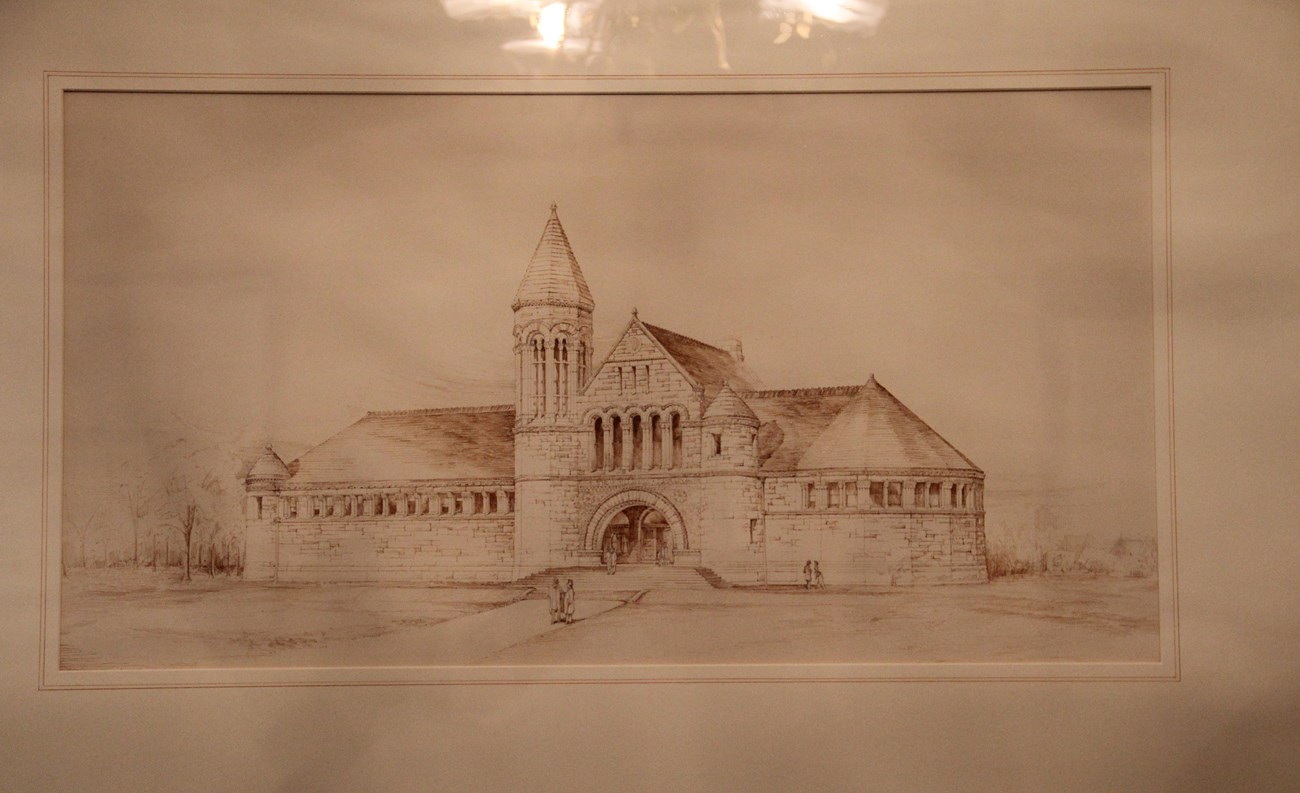
NPS Photo
“[George Perkins Marsh] often expressed the wish that the library he had built up with so much care and pride should go to the University, and would have himself placed it there if his long public life had not kept him comparatively poor, everyone will see that disposition of this unique and precious collection is the fittest thing possible” (Frederick Billings to M.H. Buckham President of the University of Vermont to donate George Perkins Marsh’s Library March 15th 1883)
A proud alumnus, Frederick Billings paid for the shipping and donation of Marsh’s 12,479 books for the University of Vermont. To house these books Billings commissioned Henry Hobson Richardson to create the Billings Library, which functioned as the main campus library from 1885-1961. After spending almost 150,000$, Billings was not satisfied with the building upon completion, much like our Mansion, saying “.. I cannot understand how a man with the reputation of ... Richardson could shoot so wide of the mark." After 1886 when the architect passed away Billings commissioned a grander interior and a separate Marsh Room to house the collection. Frederick seemed to like the second design, keeping a drawing of it from 1888 in his study on the third floor of the Mansion. There are many references to the University of Vermont throughout the Mansion, such as these small photographs, so perhaps Frederick could always have the University and Library in mind.
“I have just learned from the Rev Dr Nevin of your very generous intention with regards to the Library of my late beloved husband, and I lose no time in thanking you for it. It was Mr Marsh's strong wish that his books should go ultimately to the University of Vermont and he would have given them outright to that University had he felt he could do so in justice to those he was leaving behind. It is therefore a great satisfaction to me to know that his wishes in this respect are likely to be carried out through the liberality of a friend known to him so long, and for whom he felt so sincere an esteem.” (Caroline Crane Marsh to Frederick Billings October 8, 1882)
The initial donation was just the beginning, Marsh’s presence at the University of Vermont shows a true commitment across generations. Caroline Marsh and colleagues she implored throughout her lifetime continued to donate letters, diaries, manuscripts, and more to the University of Vermont. So, even more material of her husband’s could be available to the public. Using the collection, she published Life and Letters of George Perkins Marsh in 1888. Later, David Lowenthal in 1958-59 worked with Caroline’s family to donate the rest of her material to the University of Vermont and to the park today. Much like their combined archive, the busts of George and Caroline Marsh’s were reunited later in the University of Vermont’s Fleming Museum of Art.
Behind the Scenes: Passing the Torch, Curator to Curator
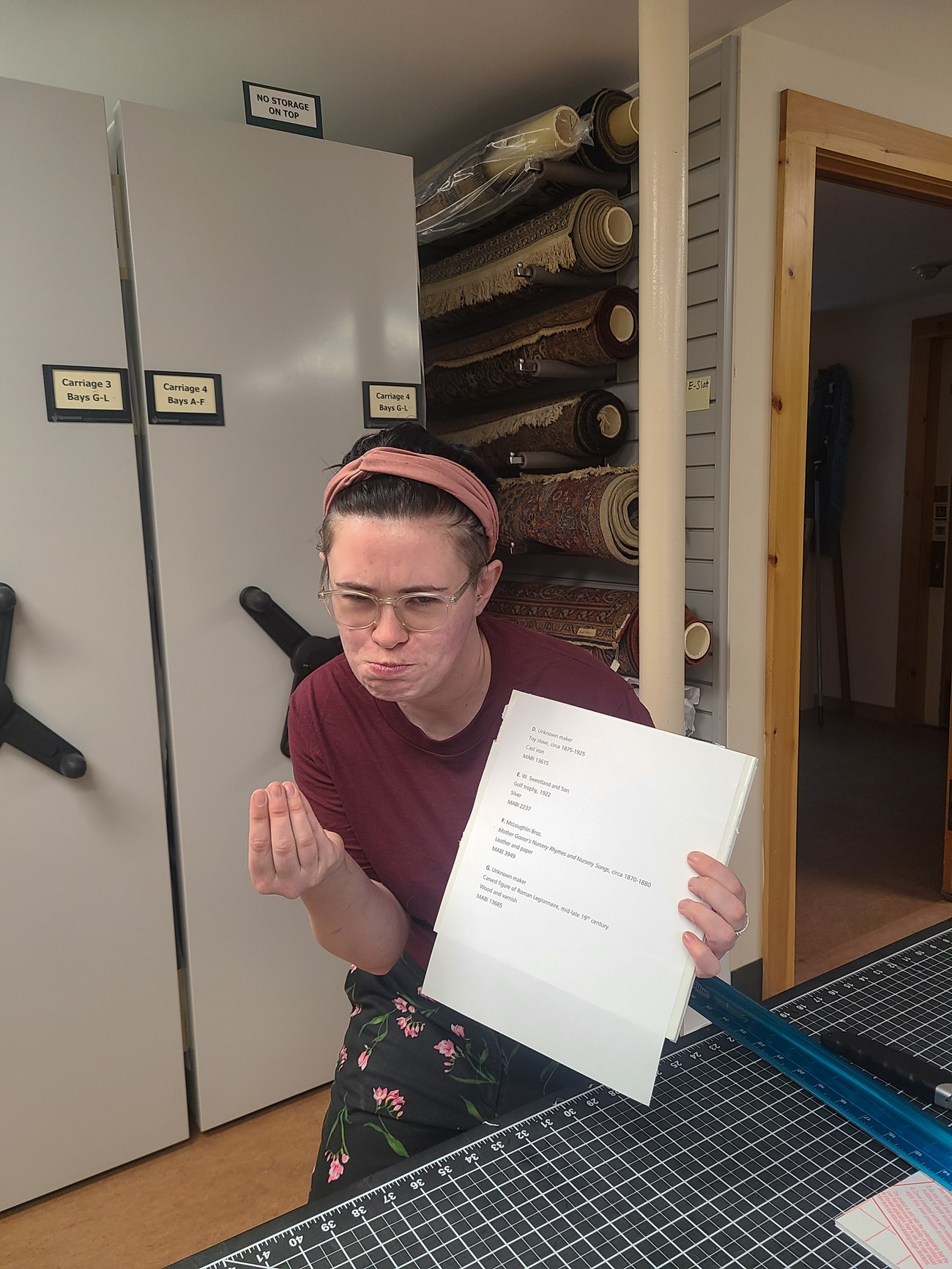
NPS Photo
Much like George Perkins Marsh passing his greatest library collection to Frederick Billings to steward, Curatorial Member’s at Marsh-Billings-Rockefeller National Historical Park pass their exhibit on. Every year during the operating season, Curatorial Member’s curate an exhibit as their final project and the next member gets to install it during the next season. This really embodies the Park’s symbol the torch of stewardship, being passed from one generation to the next.
Marsh's Mansion
What did the property look like while George Perkins Marsh and his family lived here?
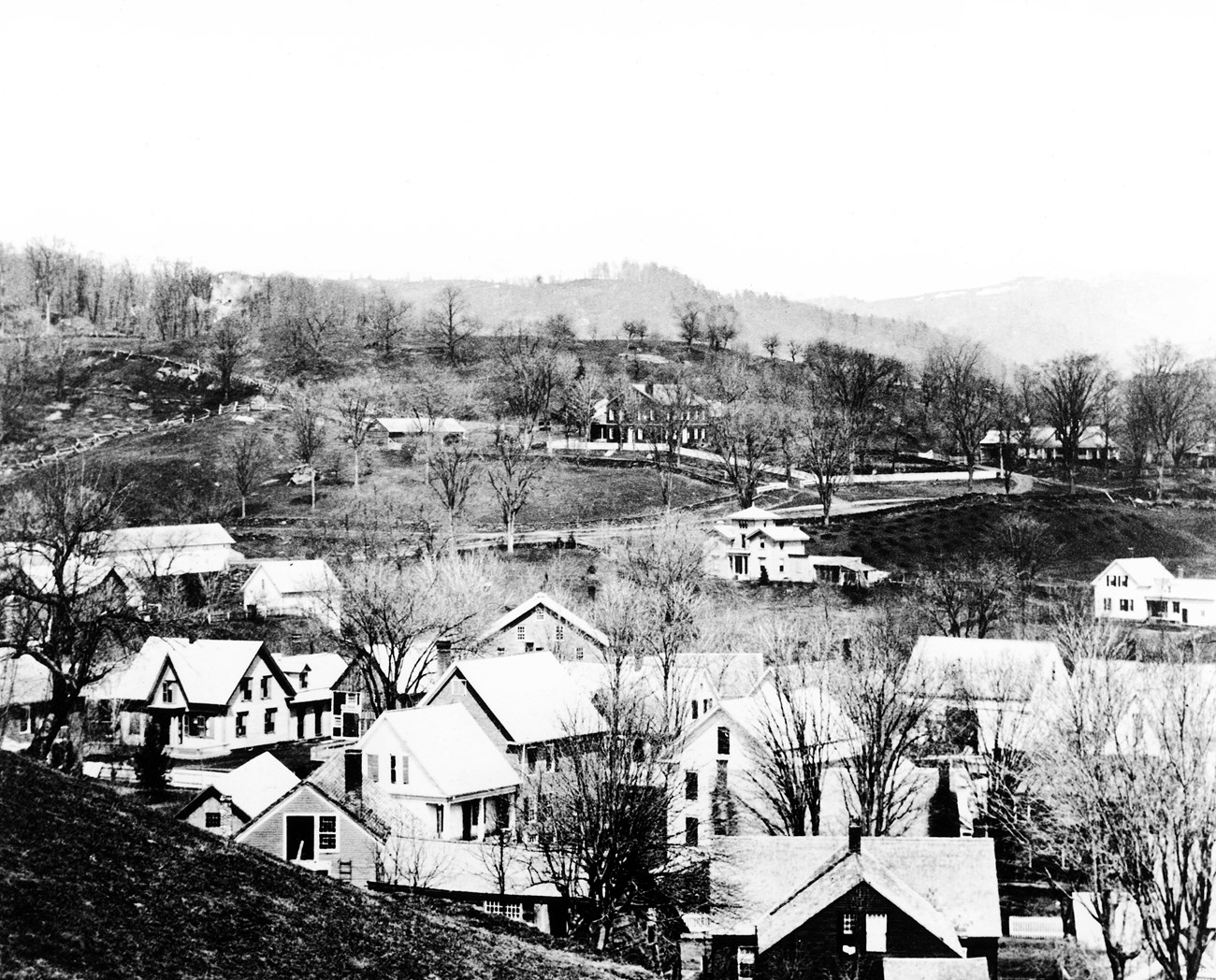
NPS Photo
The photograph exhibited gives a lens into how the area looked while George Perkins Marsh grew up in his boyhood home. Built between 1805-1807, the architect Nathaniel Smith built this two-story mansion and other substantial Federal style houses in the area in stark contrast to the Octagon Cottage the Marsh family had occupied previously. Housing family and business, the Marshs practiced law, ran a farm, and boarded guests quickly making them one of the wealthiest families in town. Amongst eight siblings, George Marsh spent his days shyly hiding under a table and reading books until he could not. Spending too much time reading in the dark he lost his eyesight temporarily. Upon this misfortune, he pivoted to spending time in nature cultivating a deep appreciation for the environment. After his eyesight recovered, George Marsh attended Dartmouth like many of his siblings and never returned to Woodstock.
George’s brother Charles Marsh Jr., the youngest son, was sold the house and 300 acres of land for a dollar in exchange for staying behind to care for his parents, George Marsh’s son at times, and the farming business. Charles was always seemingly close to George visiting him in Italy, informing him of politics, acting as a research aid for environmental change, a negotiator for copyright, and advocating for him politically. Charles sold portions of the land starting in 1853 and sold the remainder in 1869 to the Billings family. This photo is one of three, the others are in the Mansion in the third-floor archive room, hung on the wall directly behind where Frederick would sit at his desk, so that he might always remember the roots of the house. Only a few bricks remain of the original home George Perkings Marsh grew up in, here in Woodstock. After acquiring the Marsh property, the Billings renovate it (twice!) which is how it looks today. As a testament to the Marsh Family legacy, the Billings moved the first small Marsh House, the Octagon cottage, which still stands at the Billings Farm & Museum today.
Behind the Scenes: What Else Do Curators do?

NPS Photo
The curatorial department at the park gains a special appreciation for the Mansion Marsh lived in because we clean it! Other than curating exhibits and doing research, curatorial members also assist conservators, clean, pack, install, monitor, and catalog the many cultural resources at the park.
Marsh Moves Abroad
George Perkins Marsh spent the end of his life abroad serving as a diplomat in numerous countries. What evidence exists of his time abroad?
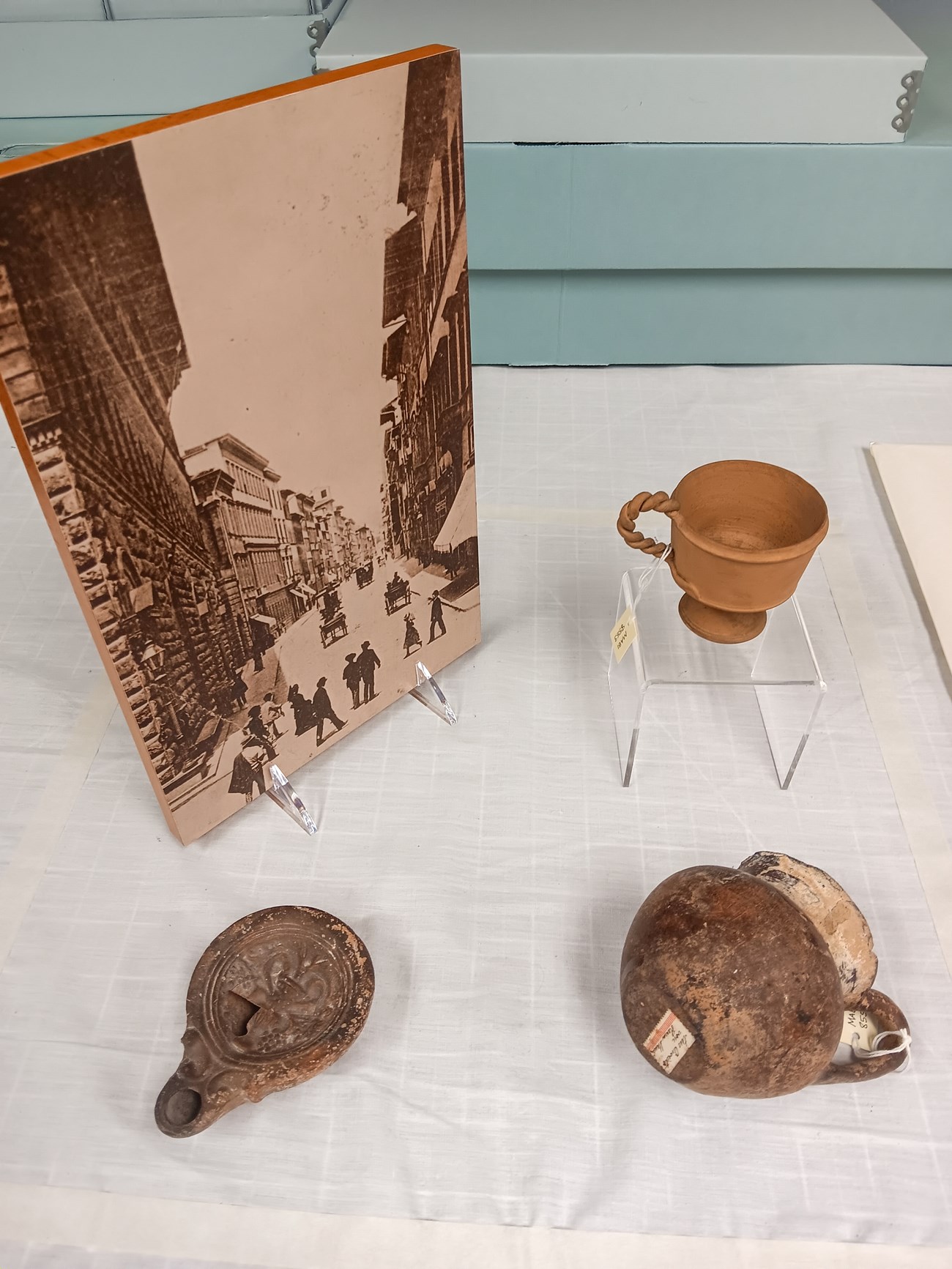
NPS Photo
These artifacts represent the Marsh’s time serving as a diplomat abroad. George Perkins Marsh served as an ambassador to Turkey from 1849-1854 then Italy from 1861-1882. This photograph depicts what Florence Italy looked like when Marsh was the U.S. Minister. David Lowenthall gave this photograph copy to the park’s Superintendent and Conservation Institute’s, today known as the Stewardship Institute, Director upon meeting them in Italy. During his time serving abroad he collected these ceramics seemingly as a souvenir. Marsh's wife, Caroline kept these ceramics, which were given to Lowenthall by her family later on. Eventually Lowenthall donated all the ceramics to the park.
One of the tags has Caroline’s handwriting in German, the other is in a Romanesque lamp design, and the last looks like a medieval style cup. In records that came with these ceramics it was said these are Turkish antiquities, but they are not similar enough to Greek or Roman pottery. This is due to uneven firing and depictions of items closer to the era the Marshs were living in, like the Victorian looking vessel holding grapes on the top of the lamp. The forgery market was quite prominent at the time, perhaps they were bought or gifted thinking they were genuine antiquities. Given Marsh’s background as a Latin instructor and lover of the ancient world one would think he would be able to spot the difference. Without more information on the vessels, one will never know why they were bought.
Behind the Scenes: Ceramic Conundrums
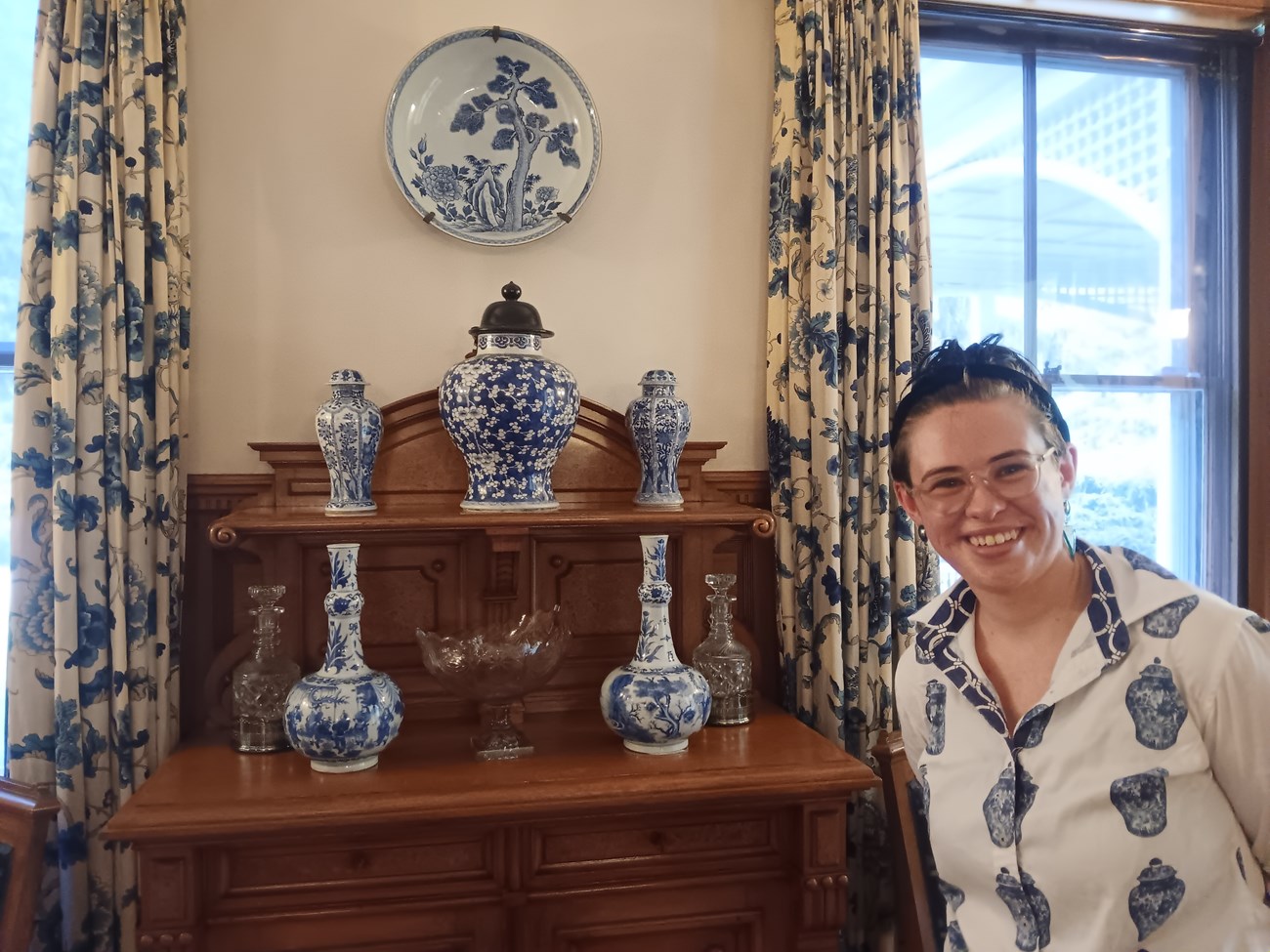
NPS Photo
These ceramics were originally identified as genuine antiquities, but further research has indicated that they are most likely not. Roman ceramics is a specialty of mine. After hours of pouring through Roman ceramic typology books these three ceramic pieces have no clear match. While it is always possible an archaeologist could unearth an artifact similar enough to our collection to deem these ceramics real, it is unlikely. Now our catalogue and object folders will be updated with more accurate information.
